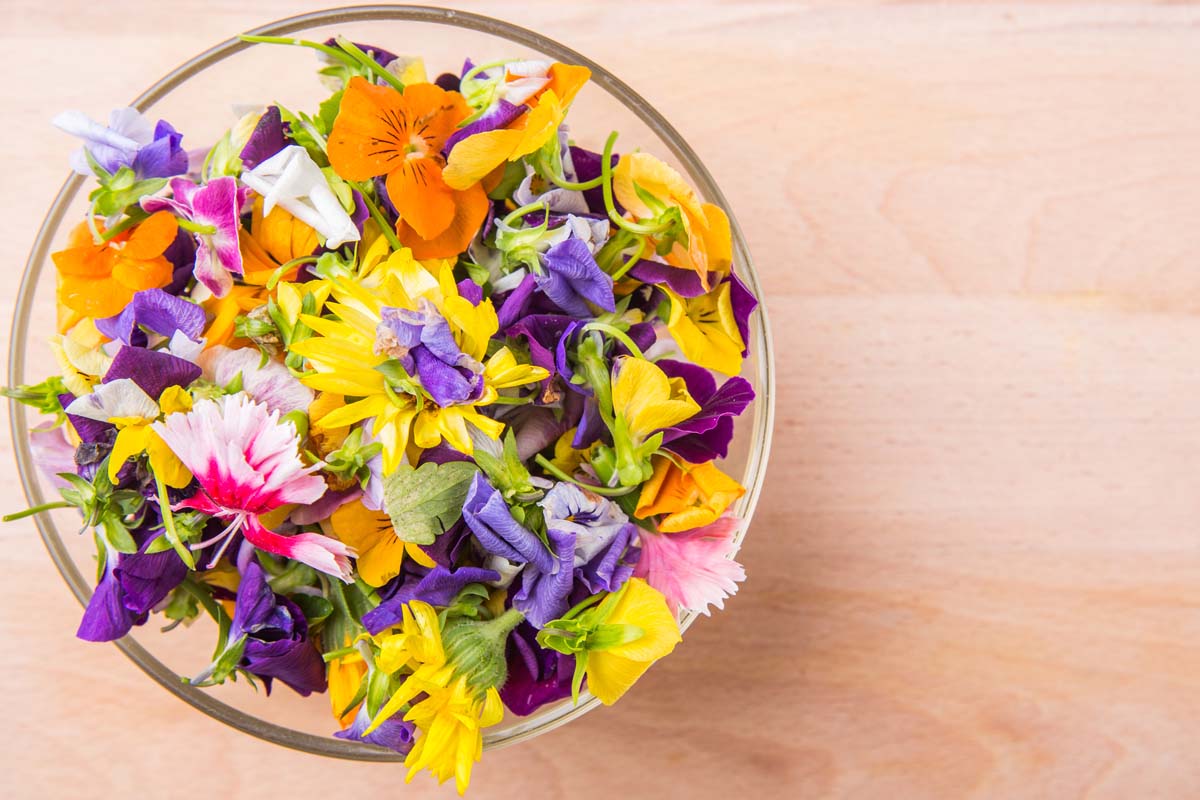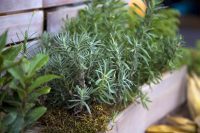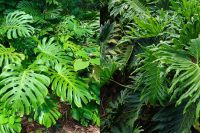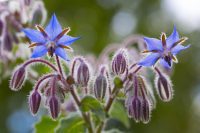Edible flowers have a long culinary and medical history and have seen a recent surge in popularity. Many commonly grown flowers are edible and can add flavour, texture and colour to recipes.
Pineapple sage
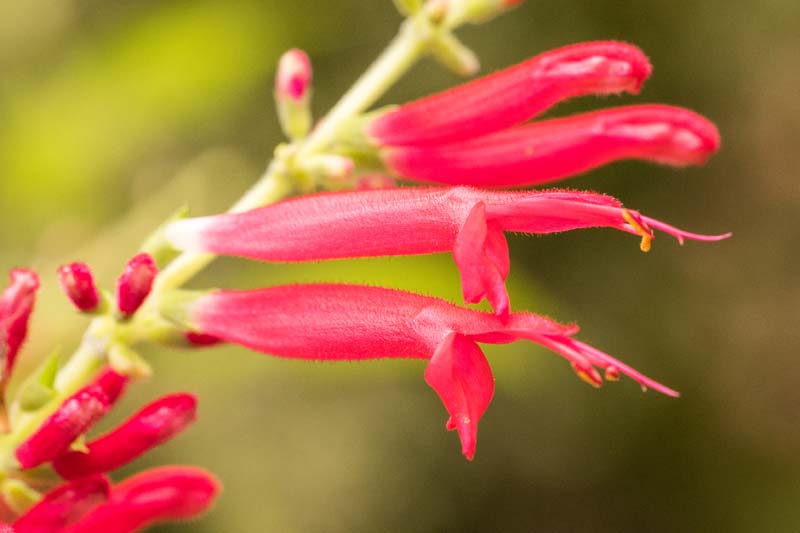
- Scientific name: Salvia elegans
- Taste: Sweet, tangy, pineapple
- Sunlight: Full sun
- Height: 1.5 metres
- Width: 90 cm to 1.2 metres
- Uses: Salads, ice cubes, garnish, tea
A herbaceous perennial in the Lamiaceae (mint) family native to Mexico. The red flowers attract butterflies and hummingbirds.
Pineapple sage is rich in vitamin K and is a good source of vitamins A, C, Bc, manganese, potassium and folate. Pineapple is used by Mexicans as a traditional treatment for hypertension and anxiety.
Calendula

- Scientific name: Calendula officinalis
- Taste: Earthy, tangy, peppery
- Sunlight:
- Height:
- Width:
- Uses: Tea, salads, infused oils, and as colourants in food
Calendula is a herbaceous perennial native to southwestern Asia, western Europe, Macaronesia, and the Mediterranean. Flowers have a long history of edible use in salads and as a garnish. The vibrant yellow can also be used as a natural food dye.
Related: Is shamrock plant toxic to dogs?
Borage
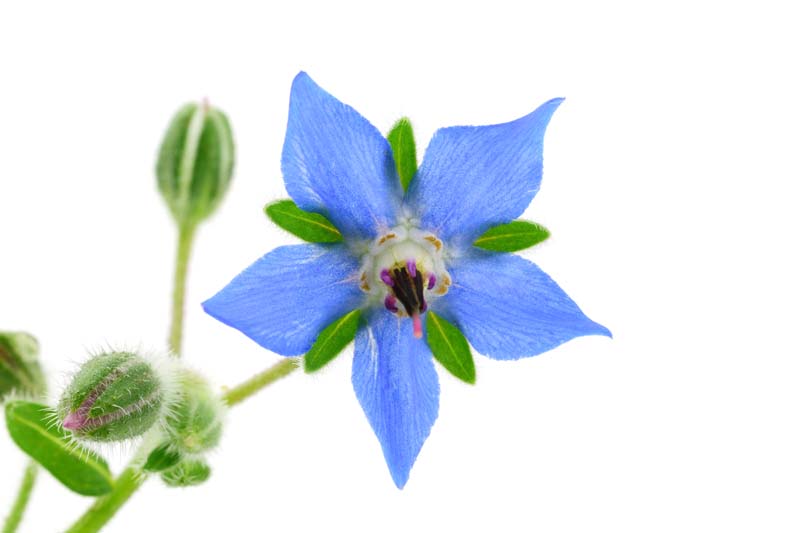
- Scientific name: Borago officinalis
- Taste: Cucumber
- Sunlight: Full sun to partial shade
- Height: 30 – 40 cm
- Width: 20 cm
- Uses: Ice cubes, soup, candied, pickle flavouring, salad
Also known as starflower, borage is an annual flowering herb native to the Mediterranean region. Borage produces an abundance of star-shaped blue flowers during summer.
Borage flower contains a number of beneficial compounds (phenolics, flavonoids and fatty acids) that have showed antioxidant and antibacterial together, along with mild anti-inflammatory and anticancer properties.
Clover

- Scientific name: Trifolium spp.
- Taste: Sweet
- Sunlight: Full sun to partial shade
- Height: 20 cm
- Width: 40 cm
- Uses: Salads, tea, fruit jellies, garnish
Clover is a genus of 300 species native to Europe and Central Asia. It is commonly used as a grazing plant for livestock. The trifoliate foliage is heart-shaped, and on rare occasions will produce four leaves, which is a symbol of good luck.
The shamrock is a type of clover and a symbol of Ireland. In Irish legend, Saint Patrick used the shamrock to explain the Holy Trinity (the Father, Son and the Holy Spirit) to non-believers.
Red clover was used in traditional medicine to treat asthma, whooping cough, cancer and gout.
Pansy
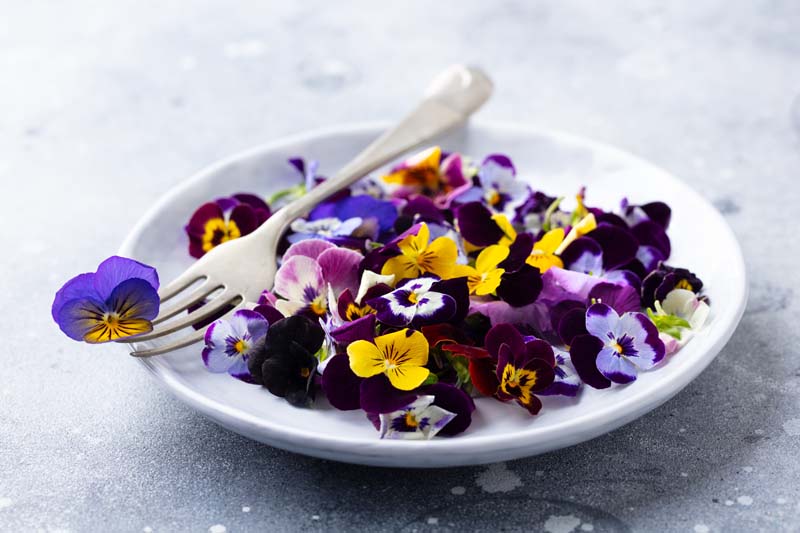
- Scientific name: Viola x wittrockiana
- Taste: Sweet, grassy
- Sunlight: Full sun to part shade
- Height: 15 cm
- Width: 10 – 15 cm
- Uses: Salads, ice, tea, cake decorating, garnish, candied
Pansies are a common flowering hybrid native to Europe and Asia. They are popular as a garden bed or potted plant for their bright, multicoloured flowers and ease of care.
The nutritional elements of pansies vary depending on the flower colour and the flowering stage. Researchers found white and yellow pansies had the highest protein, and red pansies had the highest carbohydrates. Red pansies had the highest contents of total carotenoids and monomeric anthocyanins, while white and yellow pansies had an increase in hydrolysable tannins, flavonoids, monomeric anthocyanins and antioxidant activity from bud to entirely open.
Nasturtium
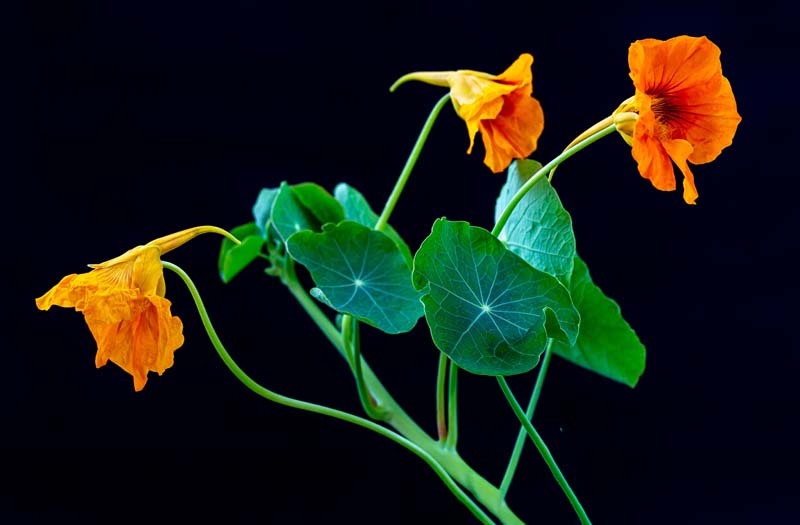
- Scientific name: Tropaeolum majus
- Taste: Peppery, slightly bitter
- Sunlight: Full
- Height: 30 cm
- Width: 90 cm
- Uses: Salads, tempura, garnish
Nasturtium is a genus of approximately 80 species of herbaceous flowering plants native to central and south America. Its funnel-shaped flowers grow in yellow, orange and red.
Nasturtiums contain a number of compounds with antioxidant and anti-inflammatory effects.
Citrus blossom
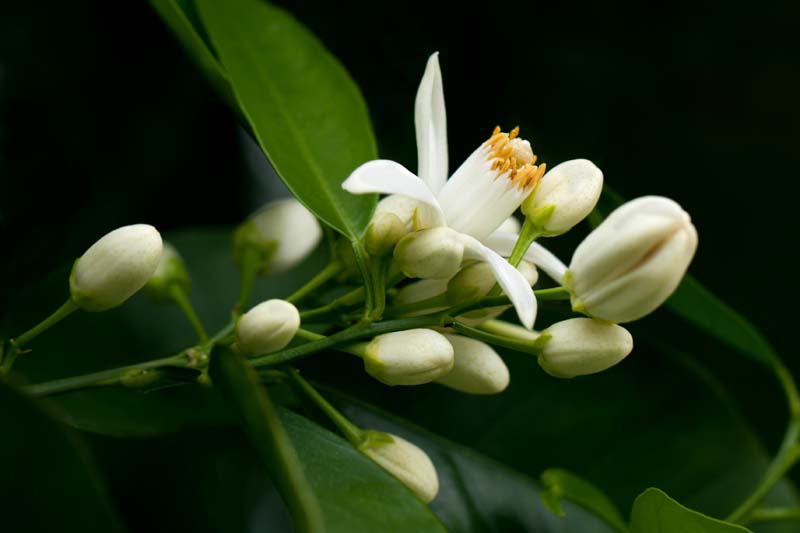
- Scientific name: Citrus spp.
- Taste: Citrus
- Sunlight: Full sun
- Height: 3 – 4.5 metres
- Width: 3 metres
- Uses: Ice cubes, salads, cakes, biscuits, blossom water, preserves, tea
Citrus is a species of flowering tree native to Asia and Australia known for its tangy fruit. Although we associate citrus with its fruit, the leaves and sweetly scented flowers are also edible.
The flowers of orange blossoms have long been used to treat anxiety and insomnia and lemon flowers may be used to treat migraines.
Cherry blossom
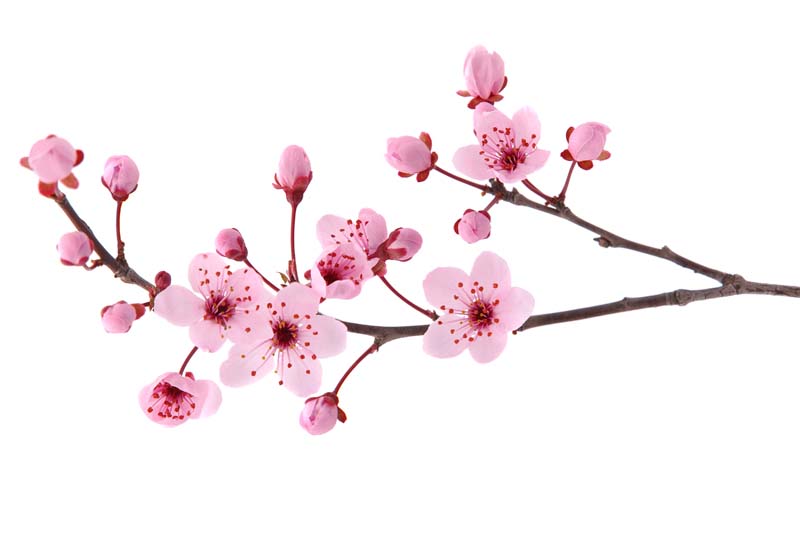
- Scientific name: Prunus spp.
- Taste: Sweet, fruity
- Sunlight: Full sun
- Height: 19 metres
- Width: 9 metres
- Uses: Cakes, jellies, tea, honey, salads, garnish, sweets, candied, ice cubes, sakura mochi, raindrop cake
Cherries are fruiting deciduous trees native to the Northern Hemisphere and made up of 430 species. The sweet and sour fruit is enjoyed fresh or in jams. Cherry blossoms (sakura) are a national flower of Japan and heralds in the spring season.
Rose

- Scientific name: Rosa spp.
- Taste: Sweet, floral, fruity
- Sunlight: Full sun
- Height: 1.2 metres
- Width: 1 metre
- Uses: Jams, jellies, sweets, candied, cakes, flavoured sugars, biscuits, ice cubes, syrups, salads, rosewater, garnish
Roses large species of flowering plant native to Asia and Europe, roses are one of the most popular flowers for gardeners and florists. The petals are used in cooking for their delicate flavour and versatility and are widely used in the cosmetic and perfume industry for their beautiful scent.
The rule of thumb is if the rose has an attractive scent, it will also have a flavour.
English lavender
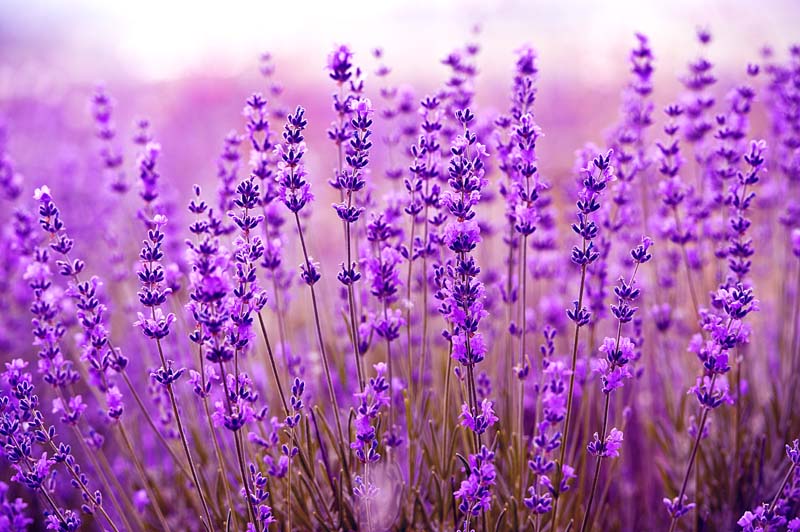
- Scientific name: Lavandula angustifolia
- Taste: Floral and slightly bitter with hints of rosemary
- Sunlight:
- Height:
- Width:
- Uses: Cakes, biscuits, icing, honey, ice cream, tea, salad, vinegar, honeys, dry spice rubs, ice blocks, butter, sugar, sorbet, jelly
Lavender is a flowering herbaceous perennial native to the Mediterranean and is a popular garden plant in cottage gardens. The flowers and foliage are highly scented and used in oils, perfumes and soaps.
The beautiful colour and scent of lavender make it a highly desirable culinary flower with a vide array of uses.
Violet
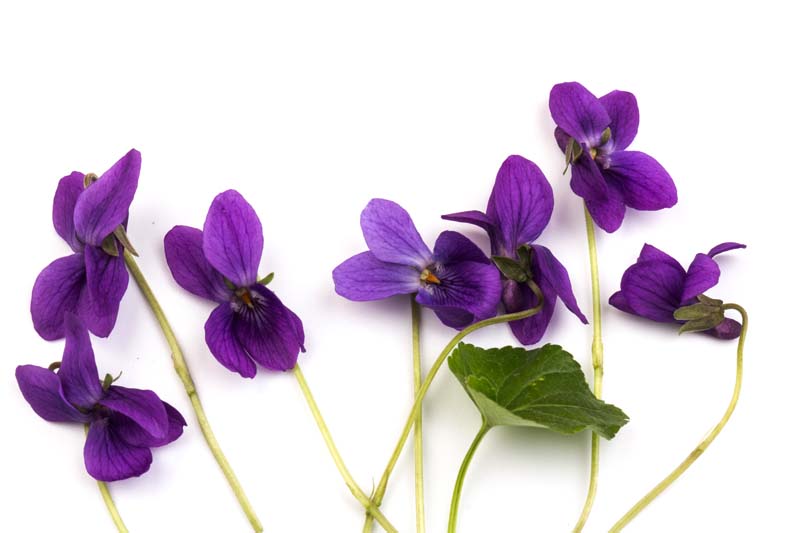
- Scientific name: Viola odorata
- Taste: Sweet and floral
- Sunlight:
- Height:
- Width:
- Uses: Jelly, gin, syrups, candied flowers, salads, cakes, teas
Also known as sweet violet, violet is a beautifully fragrant herbaceous perennial native to Europe and Asia. This shade-loving plant has beautifully scented flowers that bloom in late winter or early spring and are used in the perfume industry.
Society garlic
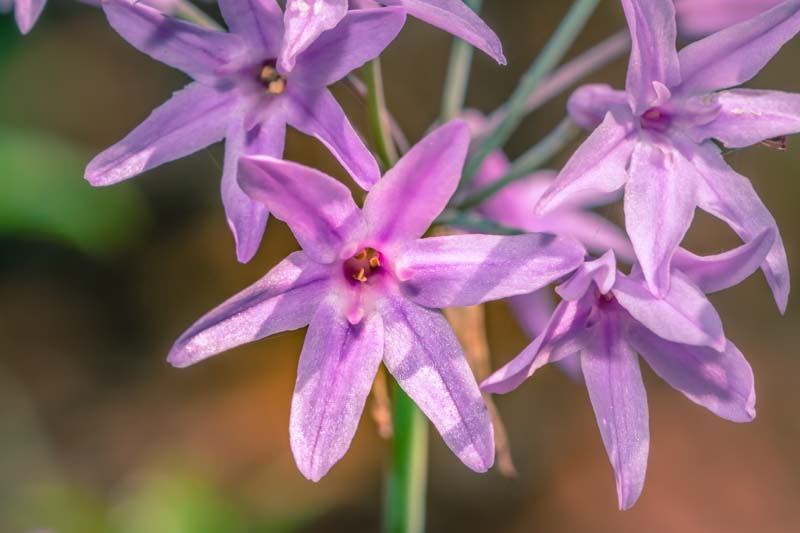
- Scientific name: Tulbaghia violacea
- Taste: Mild garlic
- Sunlight: Full sun
- Height: 30 cm
- Width: 45 cm
- Uses: Salt, salads, stirfries, flavoured vinegar, garnish
Society garlic is a perennial herb native to the grasslands of South Africa. The plant grows in clusters and is commonly planted in borders. Society garlic has long, slender stalks which emit a garlic-like odour.
In traditional medicine, society garlic has been used to treat fever, colds, asthma, paralysis, and hypertension.
Fennel
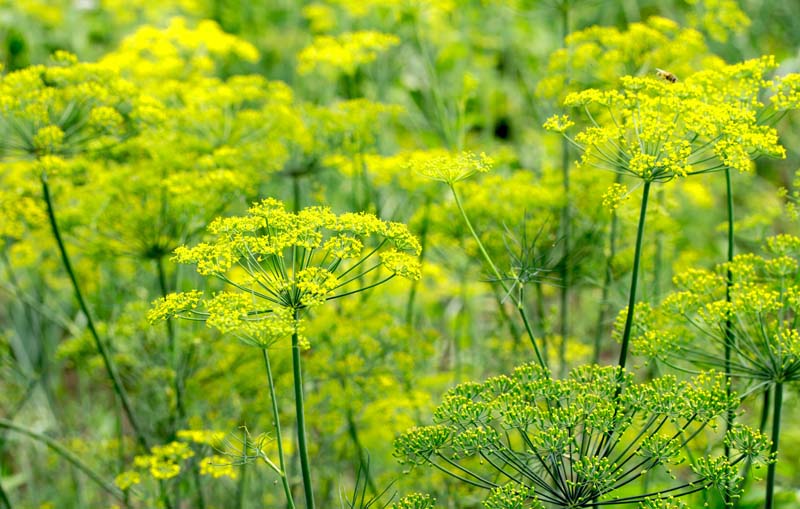
- Scientific name: Foeniculum vulgare
- Taste: Aniseed
- Sunlight: Full to partial sun
- Height: 40 cm to 2 metres
- Width: 1 metre
- Uses: Flavouring for roast meats, salads, pickles, seasoning
Fennel is a flowering perennial in the carrot family native to the Mediterranean but is widely established in many parts of the world where it has become a noxious weed. The aniseed-flavoured fennel bulbs are used in a wide range of dishes including stews. Fennel is an important ingredient in absinthe.
Anise hyssop
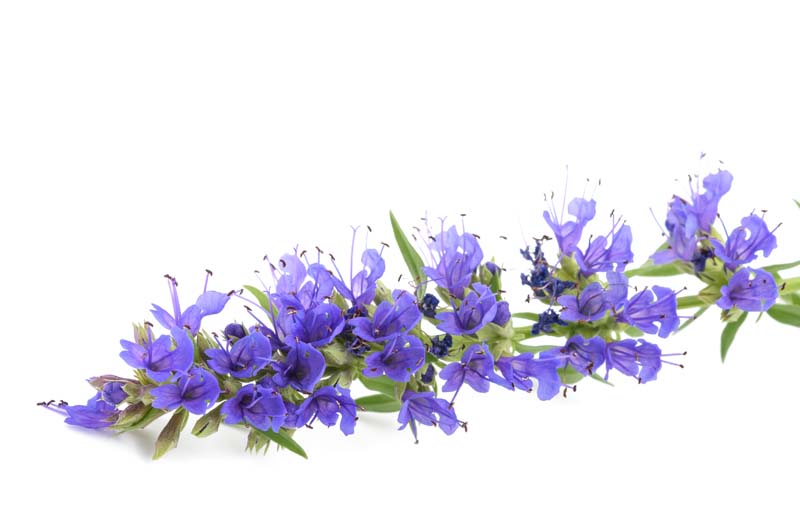
- Scientific name: Agastache foeniculum
- Taste: Mild aniseed
- Sunlight: Full sun
- Height: 60 cm to 1.2 m
- Width: 30 cm
- Uses: Tea, salads, garnish, cakes, biscuits
Anise hyssop is a perennial herb in the mint family native to northern America. Its lavender flowers attract birds and bees and bloom from early summer until autumn.
Anise hyssop was used in traditional medicine for its anti-inflammatory and antibacterial properties as well as a cold and cough remedy.
Coffee
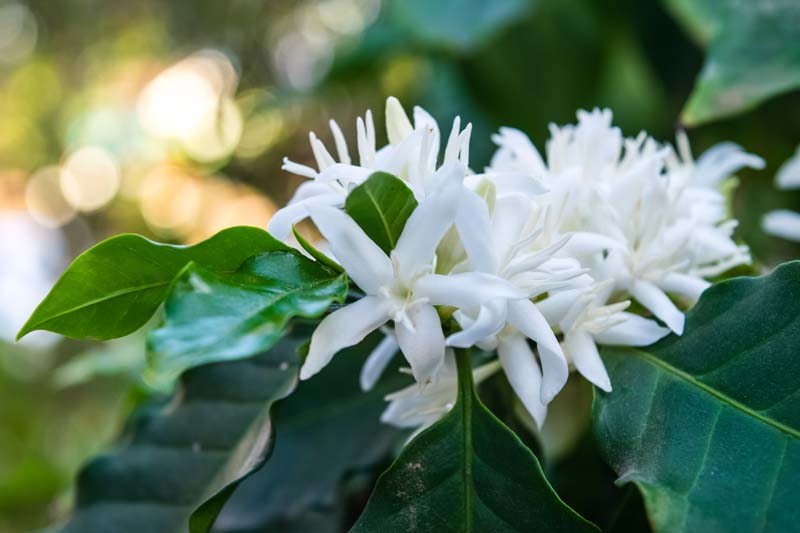
- Scientific name: Coffea arabica
- Taste: Mellow floral, slight vanilla, hint of jasmine
- Sunlight: Full sun
- Height: 5 to 8 metres
- Width: 2.5 to 4.5 metres
- Uses: Tea, ice cubes, salads, cordial
A broadleaf evergreen native to Ethiopia. Coffee has been cultivated for its beans for over 1,000 years and is commercially grown in tropical and subtropical regions globally. The short-lived white flowers smell like jasmine.
Siberian chives
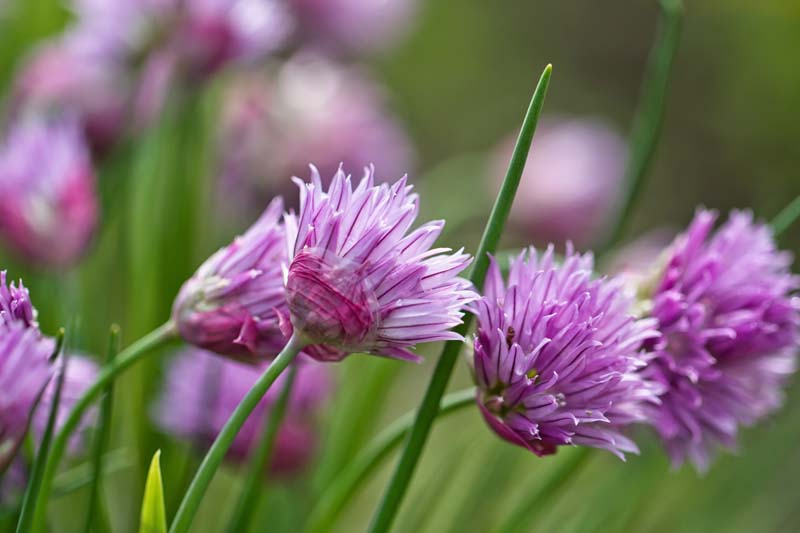
- Scientific name: Allium nutans
- Taste: Mild onion
- Sunlight: Full sun
- Height: 60 cm
- Width: 30 cm
- Uses: Salads, dips, garnish, butter
Siberian chives are a species of flowering bulbs and a member of the allium family grown for their onion-flavoured leaves. The decorative purple globe-shaped flowers are also popular with gardeners.
Sweet alyssum
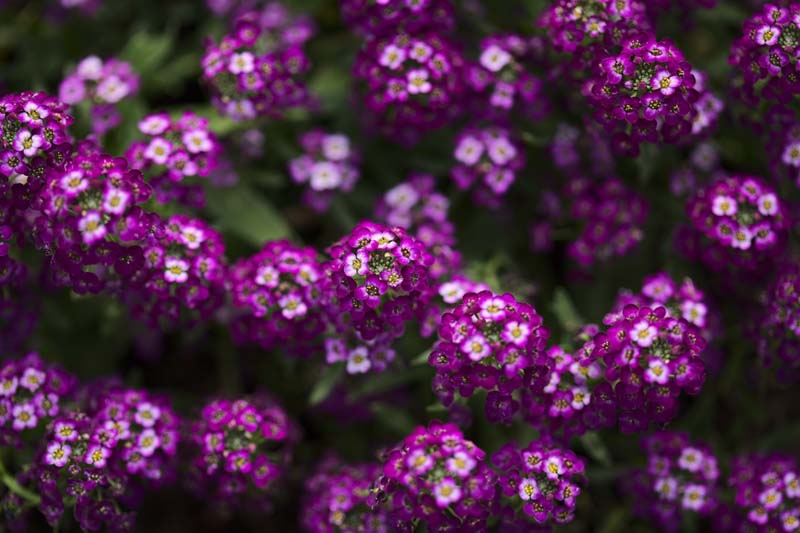
- Scientific name: Lobularia maritima
- Taste: Slightly sweet
- Sunlight: Full or partial
- Height: 5 – 30 cm
- Width: 20 – 30 cm
- Uses: Salads, ice cubes, garnish
Alyssum is a herbaceous flowering plant native to Northern Africa. It is popular as a border plant for its fast-growing, sweetly scented flowers which grow in clusters.
Echinacea

- Scientific name: Echinacea purpurea
- Taste: Earthy and floral
- Sunlight: Full sun to light shade
- Height: 1 metre
- Width: 500 cm
- Uses: Tea
Echinacea is a group of flowering plants native to North America with beautiful daisy-like flowers that bloom throughout spring and summer and are pollinated by butterflies and bees.
The flowers were widely used by Indian tribes to treat mouth sores, colds, snakebites, respiratory infections, toothache, urinary tract infections, herpes sores and gonorrhoea; skin disorders, staph infections, cold sores, ulcers, wounds, burns, insect bites, eczema, allergies and others; and rheumatoid arthritis.
Elder
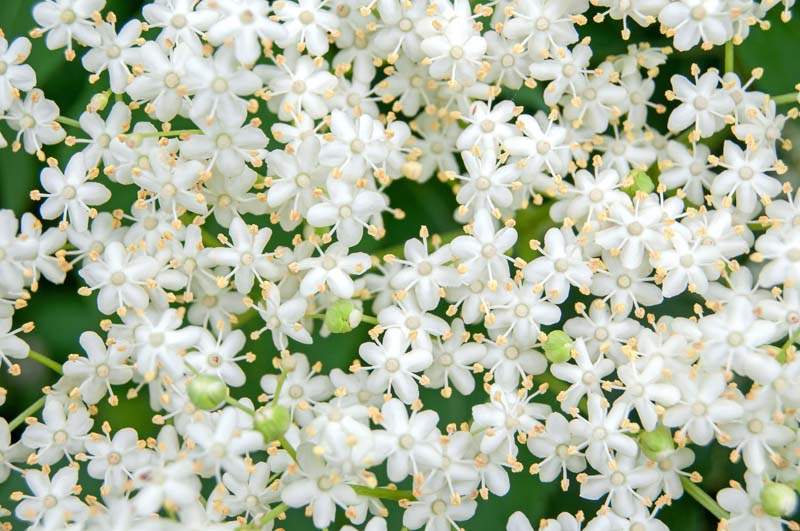
- Scientific name: Sambucus nigra
- Taste: Floral, herby
- Sunlight: Full sun
- Height: 3 – 4 metres
- Width: 3 metres
- Uses: Wine, cordial, salads, cakes, biscuits
Elderflower is a flowering shrub native to Europe. Its flowers and berries are widely used to make wines and jams. The flowers are used in traditional medicine to treat the common cold, influenza, and rhinosinusitis.
Cornflower
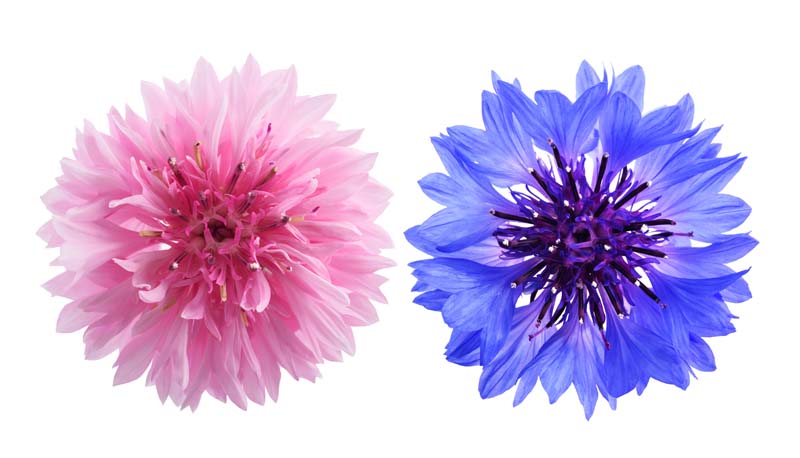
- Scientific name: Centaurea cyanus
- Taste: Mildly sweet
- Sunlight: Full
- Height: 1.3 metres
- Width: 200 cm
- Uses: Salads, garnish, teas
Also known as bachelor’s buttons, cornflower is an annual flowering plant native to Europe. The attractive flowers grow in pink, red, white and purple.
Cornflowers have been used in traditional medicine to treat feater, chest congestion and constipation.
Only the petals are edible.
Stock

- Scientific name: Matthiola incana
- Taste: Sweet, peppery
- Sunlight: Full sun
- Height: 1 metre
- Width: 50 cm
- Uses: Salads, garnish, tea, candied, ice cubes
Also known as Hoary stock, stock is a flowering annual native to southern Europe. Stock is a popular garden plant for its ease of care, and highly scented flowers and is routinely used in cut floral bouquets.
Dianthus
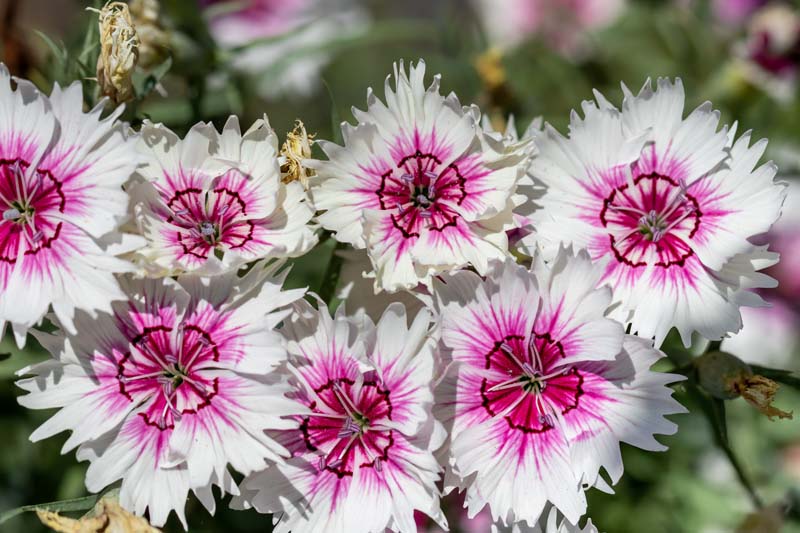
- Scientific name: Dianthus spp.
- Taste: Floral, spicy
- Sunlight: Full
- Height: 1 metre
- Width: 30 cm
- Uses: Garnish, salads, ice cubes, candied
Dianthus is a genus of 340 flowering plants native to Europe and Asia. The most well-known Dianthus is the carnation (Dianthus caryophyllus), which is a popular cut flower and is a common ingredient in the perfume industry.
Dianthus was used in herbal medicine to treat nervous and heart disorders.
Zucchini (courgette)
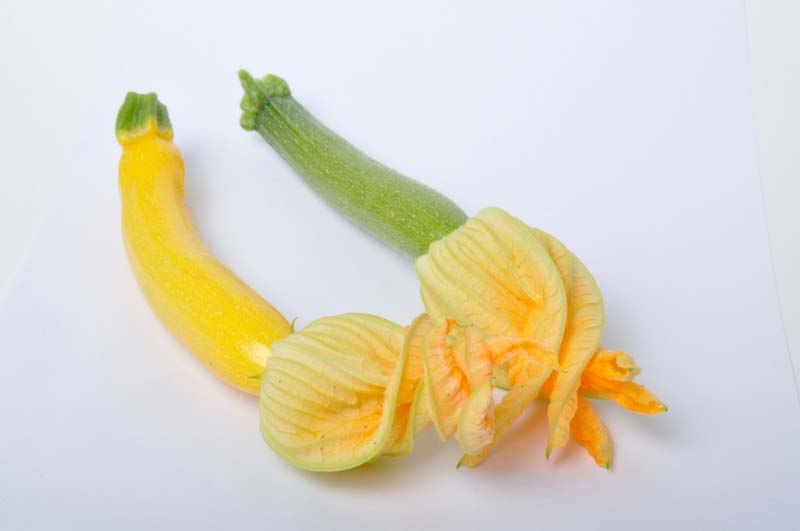
- Scientific name: Cucurbita pepo
- Taste: Mild, slightly sweet zucchini flavour
- Sunlight: Full sun
- Height: 30 cm
- Width: 120 cm
- Uses: Stuffed, salads, garnish, tempura
Also known as courgette, zucchini is a flowering plant of the genus Cucurbita, which also includes pumpkin and squash. Zucchini is predominantly grown for its fruit which is a popular ingredient in savoury dishes, but the flowers are also edible.
Hibiscus
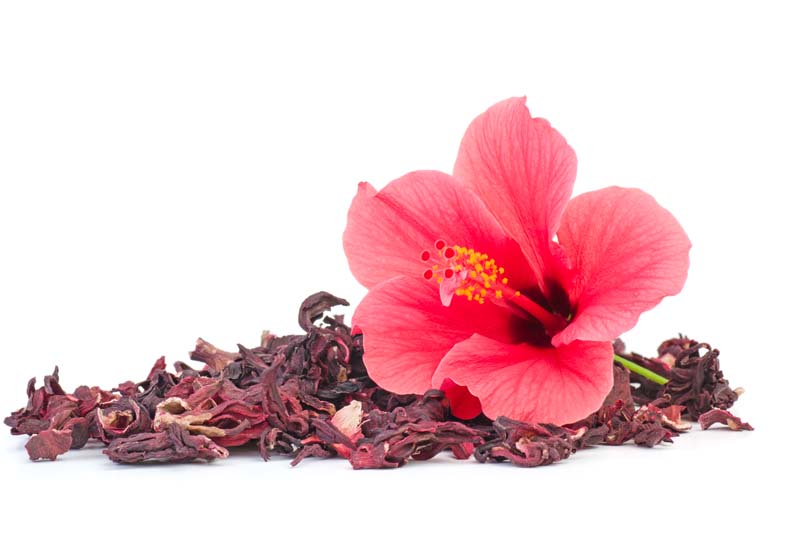
- Scientific name: Hibiscus spp.
- Taste: Tart, floral
- Sunlight: Full sun
- Height: 1 metre
- Width: 500 cm
- Uses: Salads, pickled, garnish, syrups, tea, jams
Hibiscus is a flowering plant genus native to China, Mauritius, Madagascar, Fiji, and Hawaii. The stunning short-lived flowers grow in shades of gold, red, pink and white. While all hibiscus flowers are edible, rosella Hibiscus sabdariffa is most commonly used as an edible flower.
Common jasmine
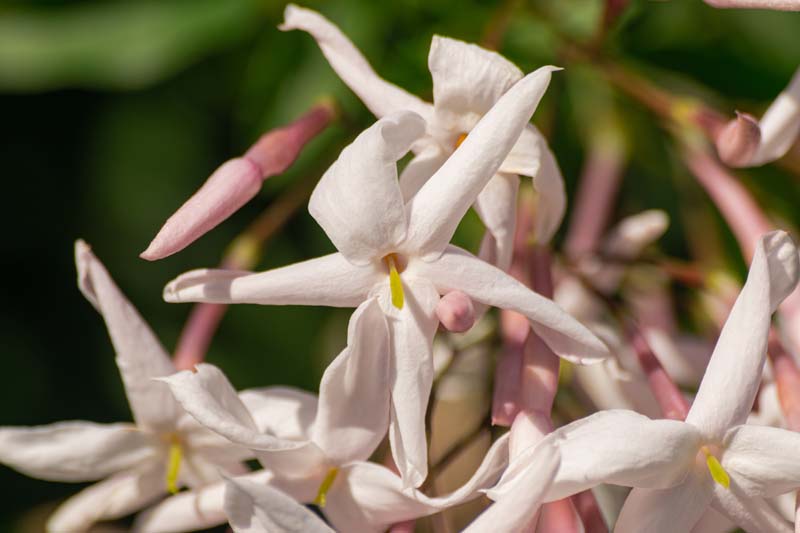
- Scientific name: Jasminum officinale
- Taste: Sweet, fragrant
- Sunlight: Full sun
- Height: 2 metres
- Width: 4 – 6 metres
- Uses: Tea, salads, candied,
Jasmine is a climbing vine native to the Caucasus, northern Iran, Afghanistan, Pakistan, the Himalayas, Tajikistan, India, Nepal and western China. It is widely valued among gardeners and in the cosmetic and perfume industry for its highly scented flowers which bloom in spring.
Jasmine is said to have a number of beneficial nutrients and antioxidants used to enhance digestion, weight loss, improve concentration and manage liver disease.
Passionflower
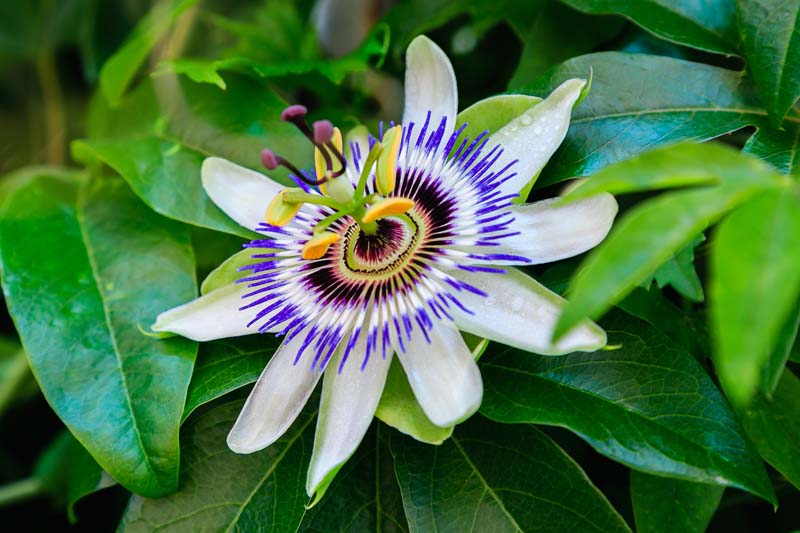
- Scientific name: Passiflora spp.
- Taste: Slightly bitter
- Sunlight: Full sun to part shade
- Height: 1.5 – 2 metres
- Width: Up to 6 metres or more
- Uses: Salads, candied, garnish
Passionflower is a climbing vine native to the southeastern United States and Central and South America that is used to manage anxiety, sleep problems, pain, heart rhythm problems, and as a dietary supplement.
Orange jasmine
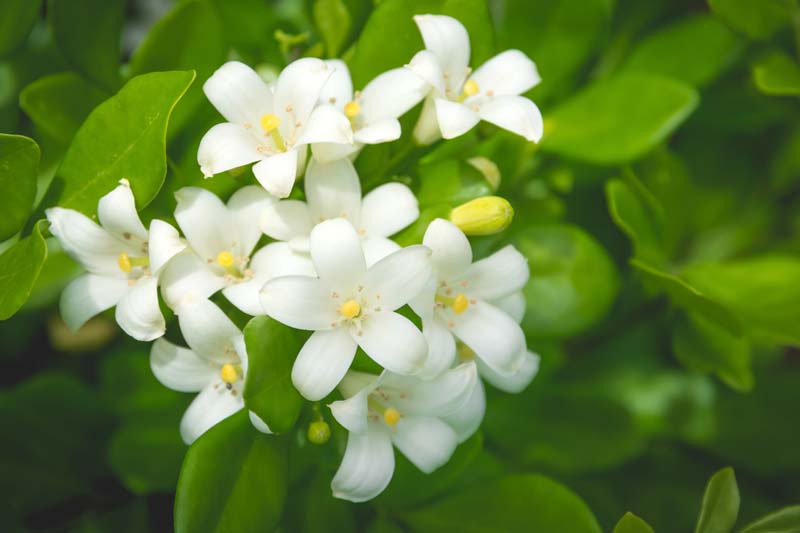
- Scientific name: Murraya paniculata
- Taste: Sweet
- Sunlight: Full sun
- Height: 2 metres
- Width: 1.8 metres
- Uses: Tea, salads, garnish
Orange jasmine is an evergreen flowering bush native to Southern China, Taiwan, the Indian sub-continent, south-eastern Asia and northern Australia. The ease of care, stunning green leaves and fragrant flowers make the orange jasmine a popular garden plant.
Banana
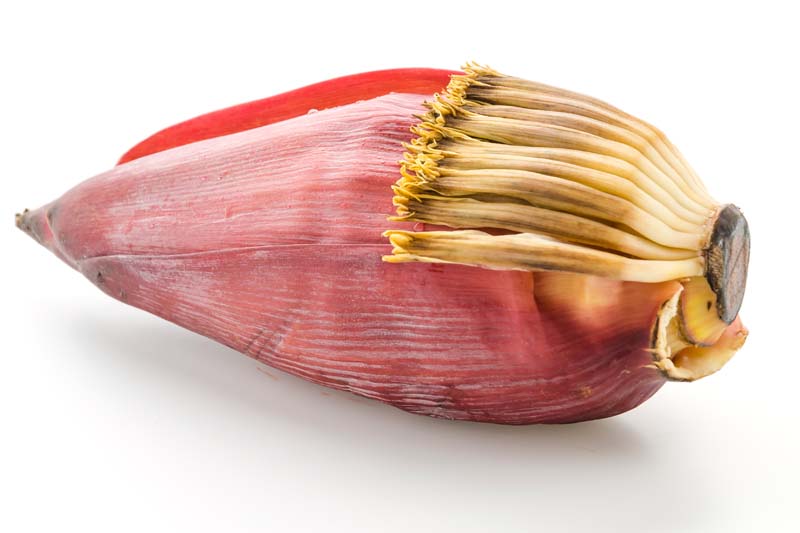
- Scientific name: Musa spp.
- Taste: Neutral
- Sunlight: Full sun
- Height: 5 m
- Width: 4 m
- Uses: Stuffed, soups, stir fries
Banana is a species of fruiting herb native to Southeast Asia and northern Australia and now grown in tropical regions across the globe. The edible fruit is high in potassium and fibre, ranking fourth in the world behind rice, wheat and maize, banana is a major food crop.
Fuchsia
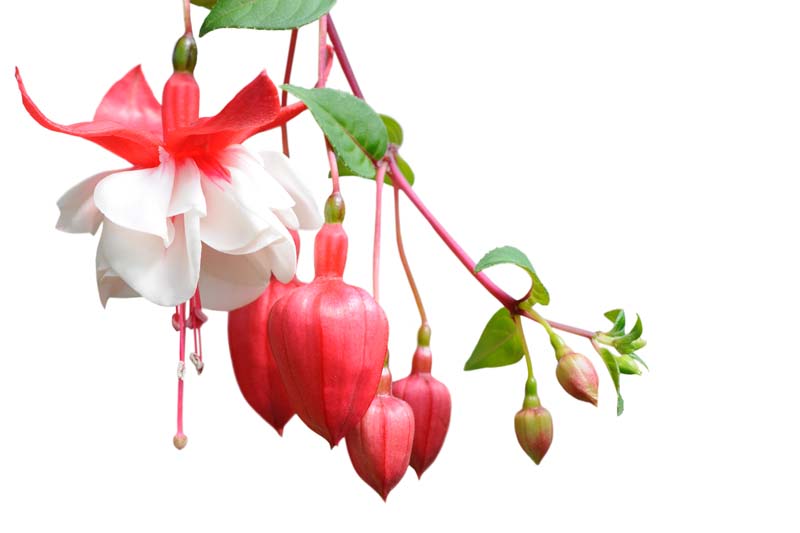
- Scientific name: Fuchsia spp.
- Taste: Mildly sweet/tart
- Sunlight: Partial shade
- Height: 30 – 60 cm
- Width: 20 – 30 cm
- Uses: Salads, candied, ice cubes, garnish
Fuchsia is a genus of flowering shrubs native to central and southern America. Its showy, multicoloured flowers make it popular as a garden plant, especially in hanging pots.
Hollyhock
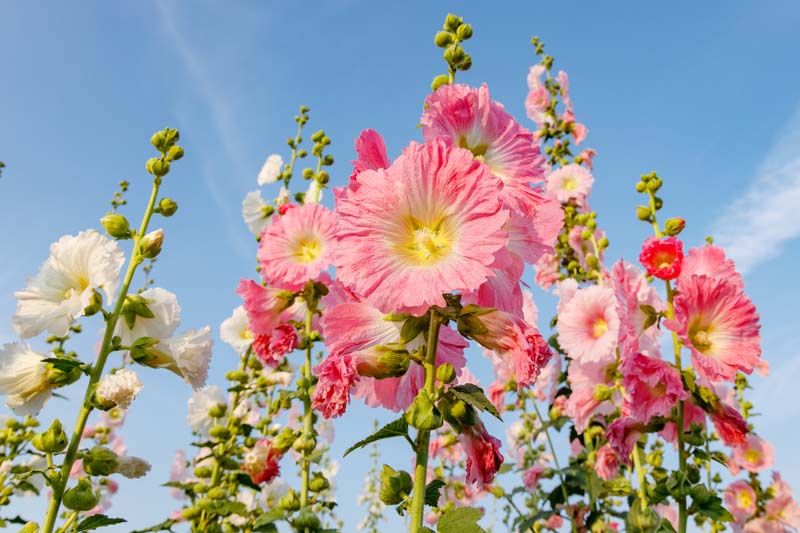
- Scientific name: Alcea rosea
- Taste: Cucumber
- Sunlight: Full sun
- Height: 1.8 metres
- Width: 40 cm
- Uses: Salads, stuffed, garnish, jellies, tea
Hollyhock is a species of flowering plant native to Europe and Asia that are commonly grown for its attractive flowers that grow on tall spikes.
The large flowers are used to make a medicinal tea, treat and prevent breathing disorders or applied directly to the skin to treat ulcers and inflammation.
English daisy
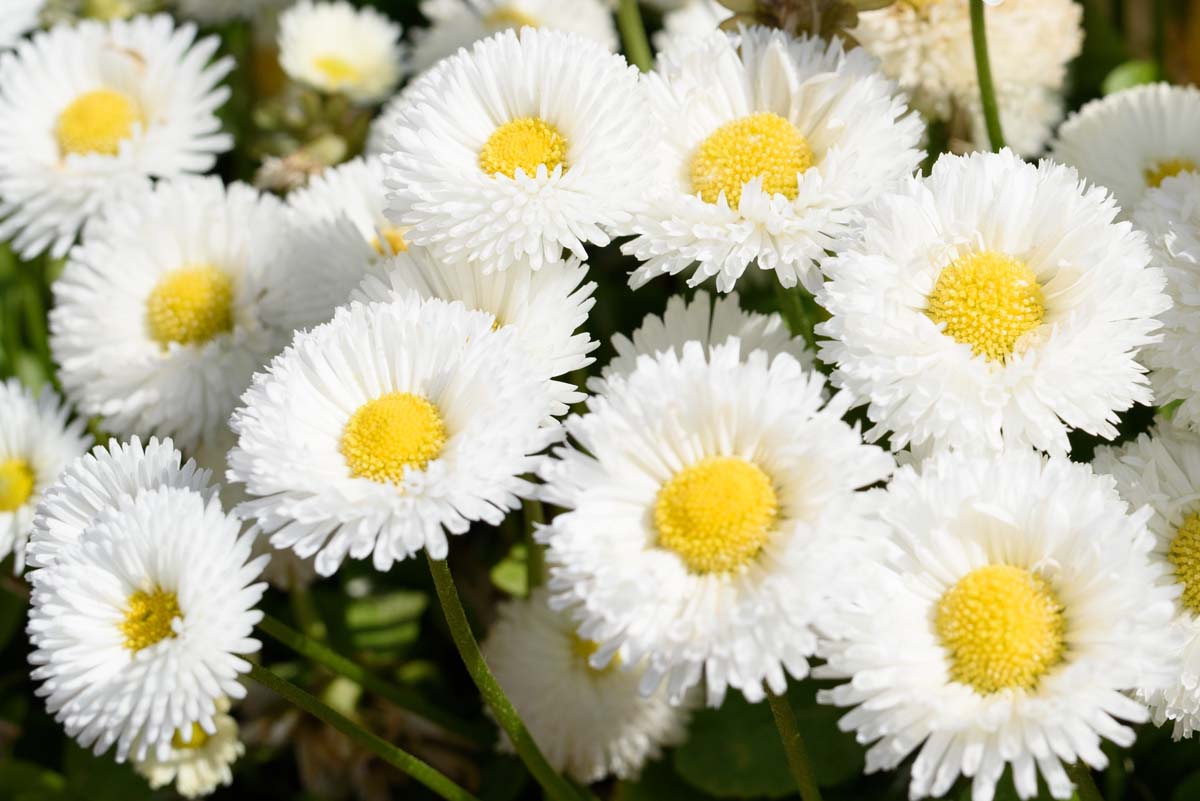
- Scientific name: Bellis perennis
- Taste: Slightly spicy, hint of nuttiness
- Sunlight: Full sun
- Height: 5 cm
- Width: 10 cm
- Uses: Salads, candied, ice cubes, garnish
English daisies are a species of daisy native to northern Africa, Asia and Europe.
Honeysuckle
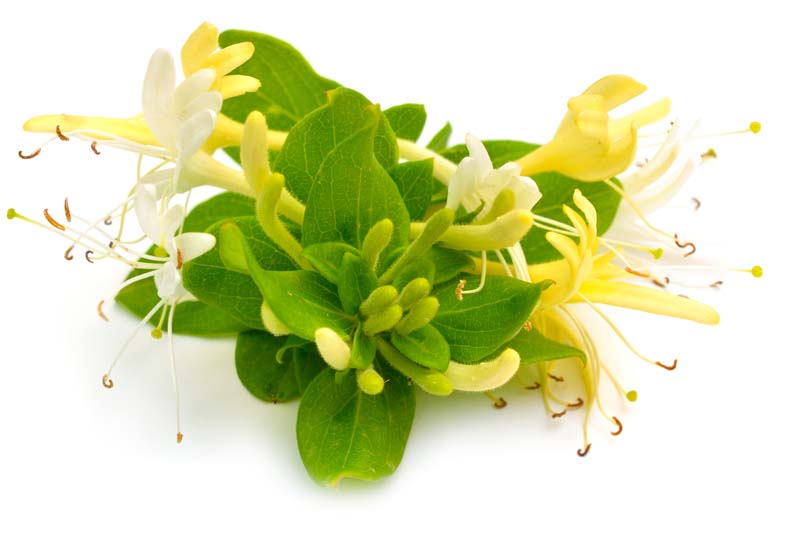
- Scientific name: Lonicera japonica
- Taste: Mild sweet
- Sunlight: Full sun
- Height: 10 metres
- Width: 5 metres
- Uses: Salads, candied, cakes, biscuits, syrup, tea, sorbet, garnish
Honeysuckle is a flowering vine native to China, Japan and Korea. This climbing vine produces abundant sweet-smelling flowers from spring onwards which contain sweet nectar.
There are approximately 180 species of honeysuckle, but most are toxic. Therefore it is important to ensure you only consume the flowers from Lonicera japonica.
Primrose
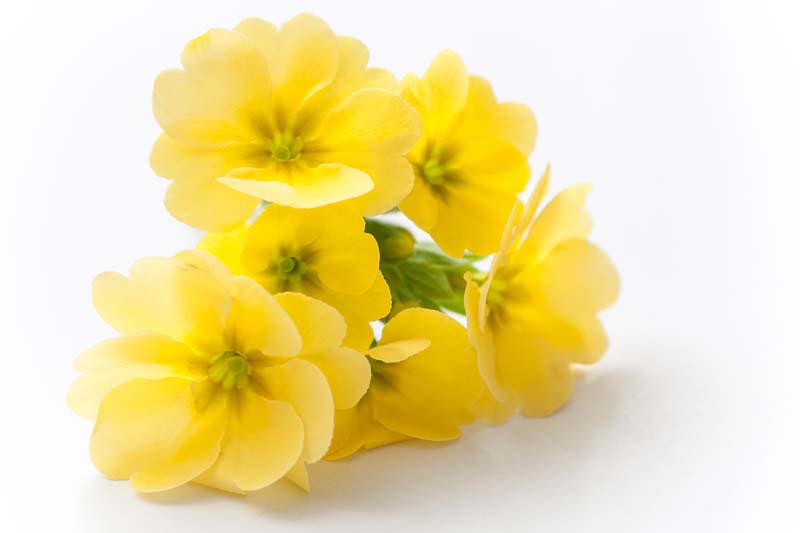
- Scientific name: Primula vulgaris
- Taste: Mildly sweet
- Sunlight: Partial shade
- Height: 25 – 30 cm
- Width: 10 – 20 cm
- Uses: Wine, curd, jam, syrups, salads, tea, garnish
Primrose is a genus of flowering plant native to western and southern Europe which produces a mass of scented yellow flowers in spring. Italy chose the common primrose as a symbol for their COVID-19 vaccination efforts.
The flowers have been used in traditional medicine to heal wounds.
Chamomile

- Scientific name: Matricaria chamomilla
- Taste: Mild apple, honey
- Sunlight: Full sun
- Height: 30 cm
- Width: 45 cm
- Uses: Tea
Chamomile is an annual annual flowering herb with fragrant flowers that native to southern and Eastern Europe. Unlike most of the plants featured in this article, chamomile is usually grown as a medicinal plant. Ancient Egyptian, Green and Roman texts describe using chamomile as a calming tea infusion and for treating reddening of the skin, and abnormally dry skin.
Only the petals are edible.
Sunflower

- Scientific name: Helianthus spp.
- Taste: Buds (artichoke), flowers (bitter sweet)
- Sunlight: Full sun
- Height: 30 cm to 1.5 metres
- Width: 20 cm to 50 cm
- Uses: Salads, garnish
Sunflowers are a large species of flowering plant native to North America. They are an important commercial crop grown for their oil and seeds.
The height of sunflowers ranges from 30 cm to up to 150 cm or taller, which makes them an outstanding feature plant for the home garden.
Lilac
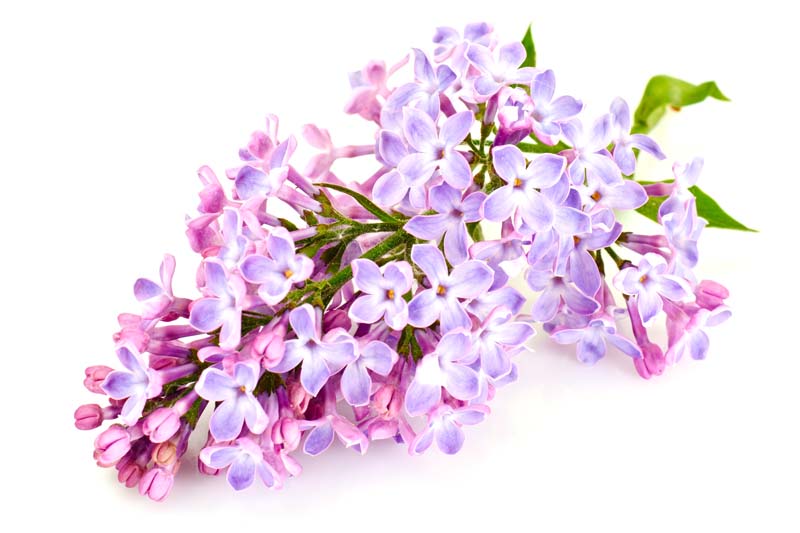
- Scientific name: Syringa vulgaris
- Taste: Floral, lemony
- Sunlight: Full sun
- Height: 2 – 4 metres
- Width: 2 metres
- Uses: Sugar, syrups, candied, salads, garnish, honey
The lilac bush is a deciduous bush native to the Balkan Peninsula but is now widespread throughout Europe. Lilacs produce an abundance of highly scented lilac or white flowers in spring which are widely used in the perfume industry.
Phlox
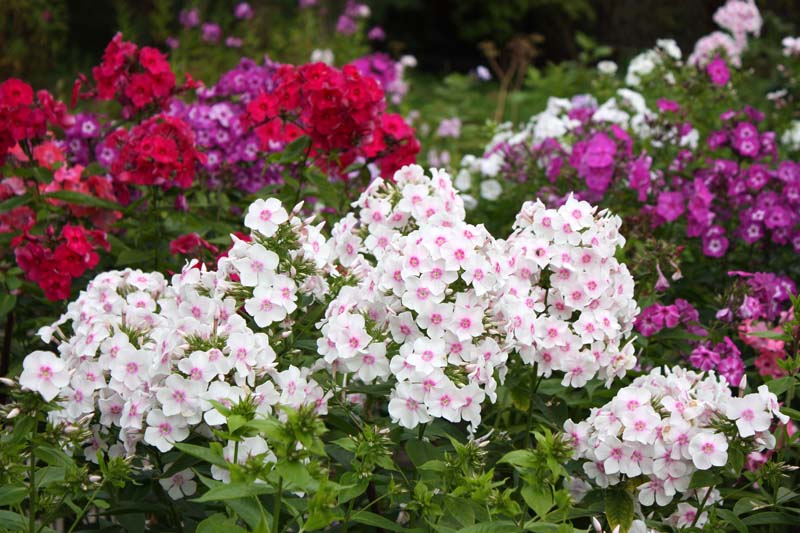
- Scientific name: Phlox spp.
- Taste: Mildly sweet
- Sunlight: Full sun
- Height: 30 – 60 cm
- Width: 30 – 60 cm
- Uses: Salads, ice cubes, garnish
Phlox is a genus of flowering plants native to the United States. The abundant flowers grow and bloom over an extended period and are an important food source for insects and hummingbirds.
Broad bean
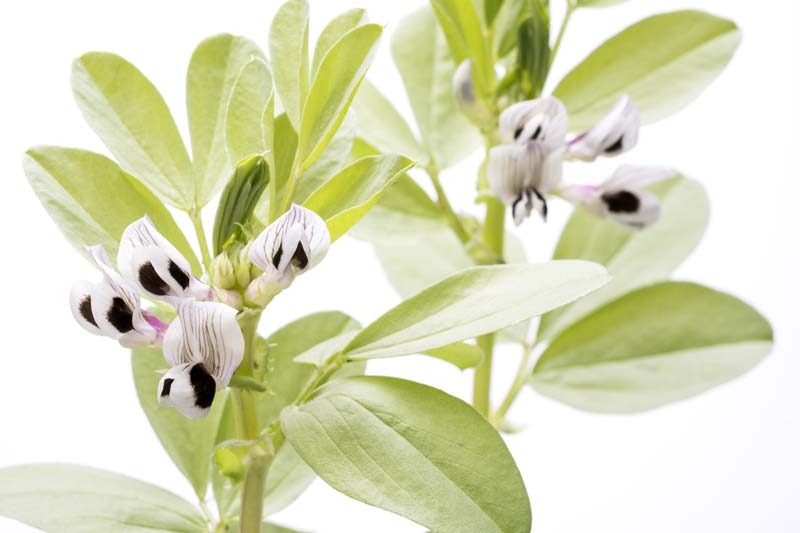
- Scientific name: Vicia faba
- Taste: Mild nutty
- Sunlight: Full sun
- Height: 1.5 metres
- Width: 30 – 45 cm
- Uses: Salads, savoury dishes, garnish
Also known as fava bean, the broad bean is a species of legume native to North Africa. Broad beans are a highly cultivated plant and are also popular with home gardeners.
Gardenia
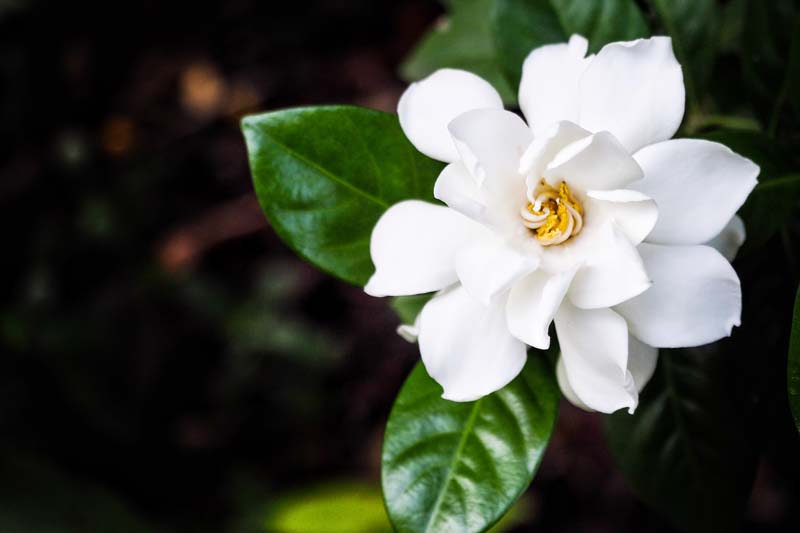
- Scientific name: Gardenia jasminoides
- Taste: Mildly sweet
- Sunlight: Full sun to semi-shade
- Height: 1.8 metres
- Width: 1 – 2 metres
- Uses: Salads, pickled, honey, cakes, candied, syrups, garnish
Gardenia is a perennial evergreen shrub grown for its beautifully scented white flowers and attractive dark green foliage that are widely used in the perfume industry.
Apple blossom
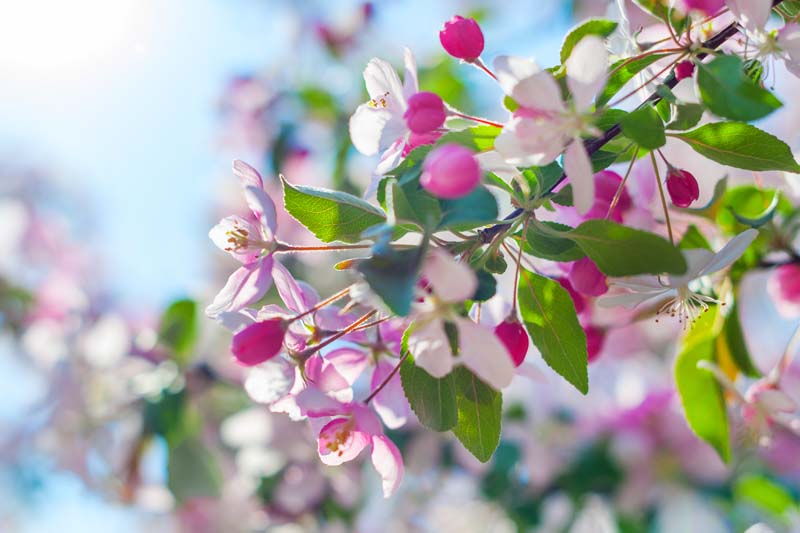
- Scientific name: Malus domestica
- Taste: Mildly sweet
- Sunlight: Full sun
- Height: 4.5 metres
- Width: 3 metres
- Uses: Jellies, syrups, salads, ice cubes, garnish, tea
Apple is a diverse group of flowering trees native to the mountains of Kazakhstan and widely cultivated. The fruit of the apple can range from tart to extremely sweet and can be consumed raw or cooked in pies and sweet stews.
Dahlia

- Scientific name: Dahlia spp.
- Taste: Slightly sweet, spicy
- Sunlight: Full sun
- Height: 1.6 metres
- Width: 60 cm
- Uses: Salads, garnish, syrups
Dahlia is a genus of flowering plants native to Mexico and Central America. Their long-lasting flowers bloom from summer until late autumn, making them popular with gardeners and florists. Flower size can range in size from 3 – 5 cm to the size of a dinner plate, hence the term dinnerplate dahlias.
Gladiolous
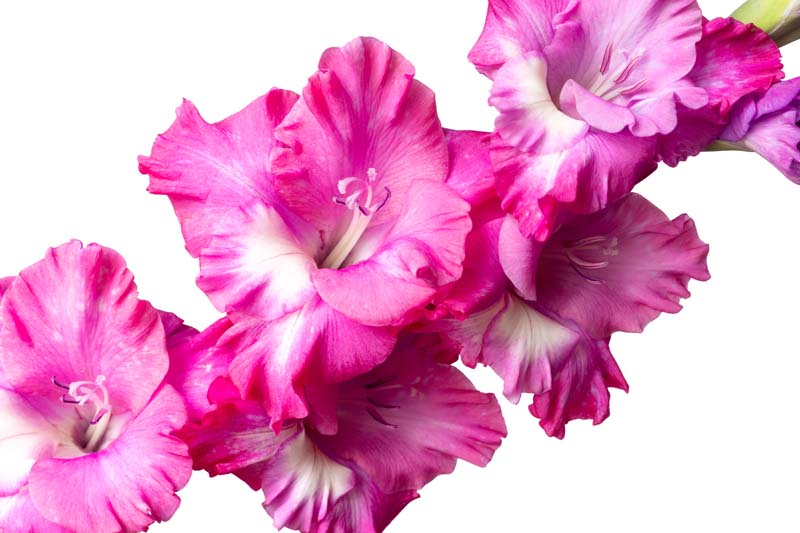
- Scientific name: Gladiolus spp.
- Taste: Mild lettuce
- Sunlight: Full sun
- Height: 140 cm
- Width: 30 cm
- Uses: Salads, garnish
Gladiolus is a genus of flowering perennials that grow from an underground corm native to Asia, Mediterranean Europe, South Africa, and tropical Africa. Mature plants produce a tall spike containing 12 – 20 florets in a wide range of colours, which are cultivated throughout the world for the florist industry.
One study investigating the bioactivity of gladiolus found the flowers have a high vitamin C content, anthocyanins, flavonoids, total phenolic contents and high antioxidant activity.
Where to find edible flowers
Many of the edible flowers featured in this article can be easily grown in the home garden or in pots providing an abundant supply of flowers for the home cook. When growing flowers for consumption, avoid the use of herbicides and sprays to avoid ingesting chemicals.
Fresh and dried edible flowers and mixes can be purchased from specialist grocery stores. Always look for organically grown flowers which don’t contain herbicides.
Some edible flowers grow in the wild and can be foraged. Avoid picking flowers along busy roads due to contamination from traffic as well as the risk of herbicide contamination.
Notes
All of the edible flowers in this article can be eaten raw or cooked. Some flowers are consumed whole, and others just have edible petals. It was beyond the scope of this article to include preparation notes or recipes, but have tried to link to a few.
Some of the flowers in this article add a visually appealing element to meals, but not much flavour. As a rule, the stronger the scent of the flower, the stronger the flavour. Jasmine, rose and lavender all have a beautiful scent and add flavour to a range of foods. One of the nieces examples of lavender in cooking was lavender icing, which imparted a beautiful and delicate floral taste. Rose is the main flavour in Turkish delight and jasmine flowers have been used to flavour teas for centuries.
Julia is a writer and landscape consultant from Wollongong with a love of horticulture. She had been an avid gardener for over 30 years, collects rare variegated plants and is a home orchardist. Julia is passionate about learning and sharing her knowledge of plant propagation and plant toxicology. Whether it’s giving advice on landscape projects or sharing tips on growing, Julia enjoys helping people make their gardens flourish.
